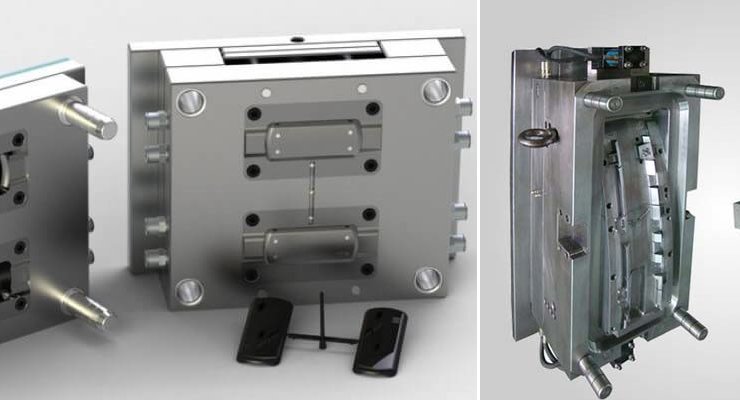More than a third of plastic parts are produced by injection molding. For this, special injection molding machines are used - injection molding machines. With their help, it is possible to organize the mass production of products of complex shapes in strict accordance with the established dimensions. At the same time, a significant part of the cost of thermoplastic parts is the process mold making . The type of its construction will determine the profitability of the entire production.
Design selection criteria
The type of mold and the type of gating system are selected according to the algorithm. As initial information, it is necessary to set the nesting, dimensions of the part to be produced (length, width, wall thickness), anisotropy of properties, the presence of a side wall with dimensions.
So, can be applied:
1. Single-cavity with a point gating channel. Allows you to spend all the polymer to fill the cavity, that is, the ratio of the mass of the melt to the mass of the finished product is equal to one. The advantage of this design is the high quality of the castings. This is due to the completeness of the relaxation processes and minimal shrinkage. In addition, a small sprue does not need to be removed mechanically. Such a mold can be used for small parts with thin walls, as well as for thick walled, but subject to an increase in the specific pressure in the mold (otherwise sinks will form on the casting). (0.8-1.2 mm) promotes:
- homogenization of the melt due to increased shear rates of the casting (20 thousand - 200 thousand 1 /s);
- additional heating of the polymer due to energy dissipation;
- decrease the shutter speed to 1-2 sec.
2. Multi-cavity with point inlet sprues . Suitable for the manufacture of small-sized products in large-scale production. By keeping the gating system in a heated state (except for the injection zone), the melt consumption is reduced, and there is no need for mechanical removal and crushing of the gates. 3. Multi-cavity with tunnel sprues. When casting small parts with side walls 6-8 mm high. Allows you to abandon the operation of removing the sprues (it occurs automatically when the mold is opened), while still requiring their re-processing. 4. Multi-slot with tear-off sprue. If necessary, the inlet runner to the center of the part. The disadvantage is the high consumption of polymer (due to the presence of cooled sprues), as well as the presence of a split plane. 5. Single-cavity hot runner with multiple inlet sprues. Only useful for large-sized items. This design reduces pressure drops and melt heterogeneity when filling the cavity.
There are many possible variations in the combination of the number of cavities and the type of gating systems. The correct calculation will help to reduce the casting cycle time, melt consumption and labor intensity of the entire process. Therefore, it is important to involve experienced, highly qualified specialists in the manufacture of the mold.




